
Zafiro: colores, significados, precios y beneficios
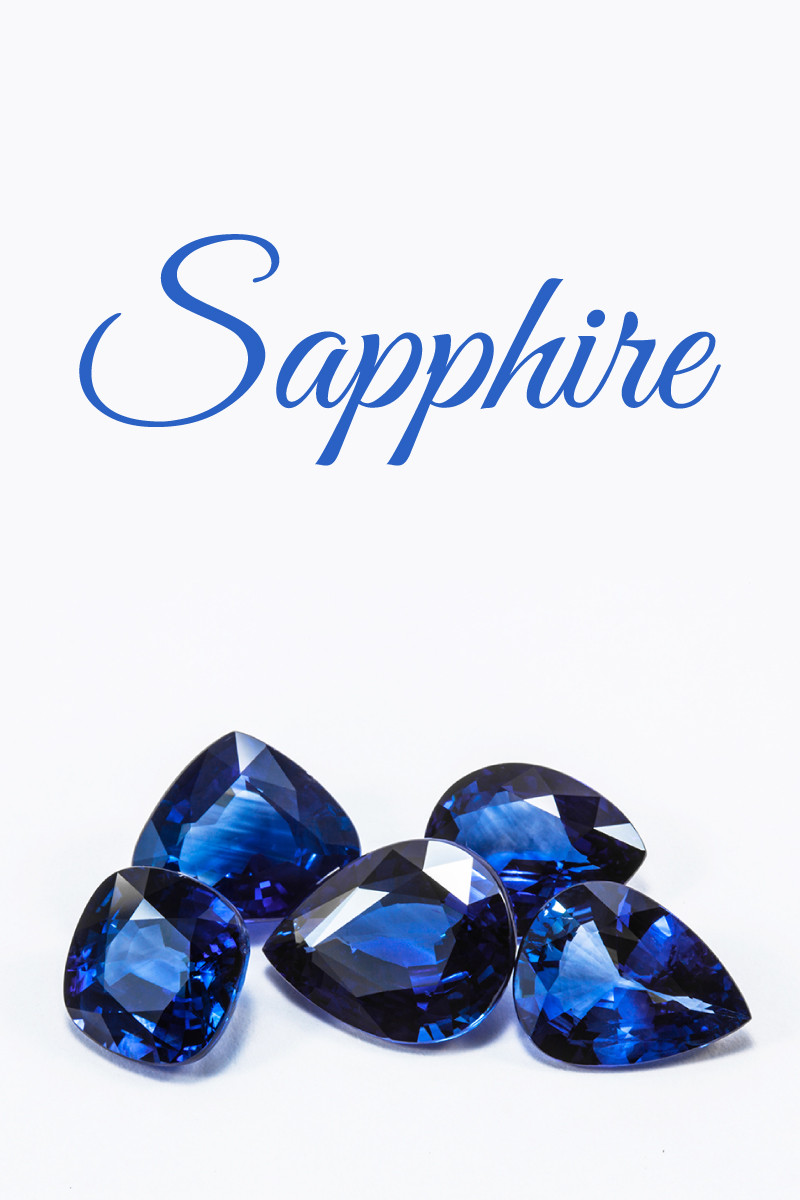 El zafiro es una gema de corindón apreciada por muchas razones a lo largo de la historia. Además de sus hermosos colores, se le ha venerado por sus supuestos poderes espirituales y su durabilidad en aplicaciones industriales.
El zafiro es una gema de corindón apreciada por muchas razones a lo largo de la historia. Además de sus hermosos colores, se le ha venerado por sus supuestos poderes espirituales y su durabilidad en aplicaciones industriales.
Es difícil distinguir el zafiro del azul, a pesar de que la piedra se presenta en una amplia gama de colores. De hecho, la palabra "zafiro" describía al lapislázuli y otras gemas azules hasta la Edad Media. Hoy en día, el "azul zafiro" es un color propio fuera de la gema, presente en diversas artes.
¿Cuál es el color más raro del zafiro? No es una certeza absoluta, pero la mayoría de los gemólogos dirían que los zafiros azul Cachemira o Padparadscha son los más raros.
¿No reconoces estos términos? ¡No te preocupes! Esta guía detallará cada color y variedad de zafiro, junto con la historia, los precios y los significados de esta gema legendaria.
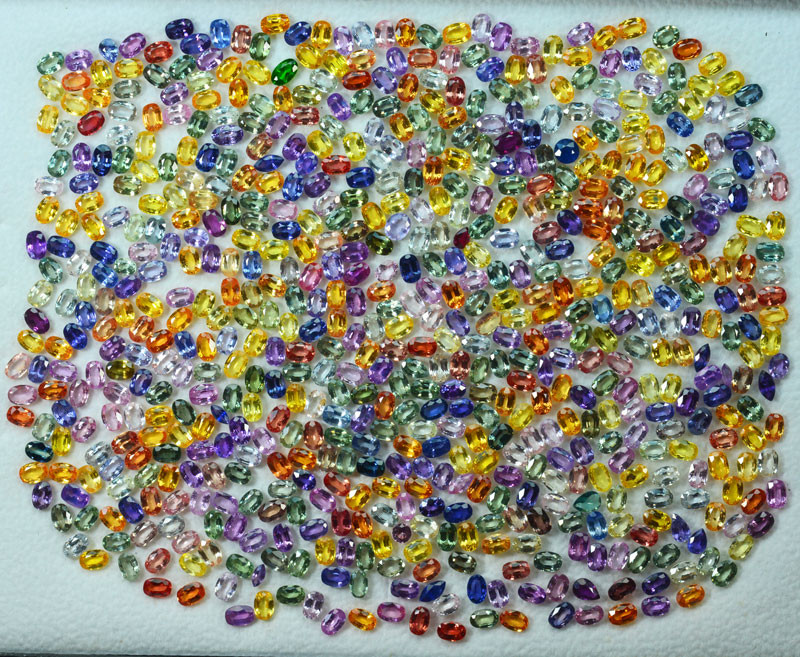
Acerca de la piedra de zafiro
Independientemente de su color, el zafiro es una de las cuatro piedras preciosas . El zafiro es una piedra de nacimiento que honra a los nacidos en septiembre , aunque históricamente se consideraba la piedra de nacimiento de abril . También se usa para celebrar el 5.º, 45.º y 65.º aniversario de boda . Astrológicamente, los zafiros pertenecen al signo zodiacal de Tauro.
Ciertos colores de zafiro son importantes en la astrología ayurvédica (o hindú). En esta práctica, el zafiro azul, llamado Neelam, es una piedra de la estrella de Saturno, mientras que el zafiro amarillo, o Pukhraj , es una piedra de Júpiter.
El zafiro es la piedra preciosa oficial del estado de Montana, EE. UU., y Queensland, Australia.
Fuera de la joyería, el zafiro tiene algunas aplicaciones industriales importantes, entre ellas:
Relojes
Obleas electrónicas
Componentes semiconductores
Sustratos LED
Ventanas extra duraderas (incluidas las utilizadas para óptica infrarroja)
Si tienes un modelo de Apple Watch de acero inoxidable o titanio, ¡podría contener cristal de zafiro!
Una de las razones por las que los zafiros son útiles industrialmente es su alta clasificación en la escala de dureza mineral de Mohs , una de las propiedades que analizaremos a continuación.
Especificaciones y características del zafiro
Los zafiros son una de las dos variedades de corindón , siendo la otra el rubí . Los minerales de corindón están compuestos de óxido de aluminio.
Normalmente, los zafiros se forman como cristales prismáticos de extremos planos, con forma de barril o bipiramidales.
A continuación, enumeramos las propiedades minerales del zafiro.
(Para conocer las propiedades de color específicas del zafiro, como el pleocroísmo o los colores de luminiscencia, consulte cada guía de color de zafiro vinculada en la siguiente sección).
Familia de minerales : Corindón
Dureza de Mohs : 9
Color : Todos los colores excepto rojo; Posible zonificación de color
Estructura cristalina : hexagonal (trigonal)
Brillo : Vítreo (vidrioso) a subadamantino
Transparencia : Transparente a opaco
Índice de refracción : 1,757-1,779
Densidad : 3,99-4,10
Escote : Ninguno
Fractura : Concoidea
Raya : Blanca
Luminiscencia : Fluorescencia presente en todos los zafiros excepto el negro, el verde y la mayoría de los azules (naturales), en grados variables en todos los colores (sintéticos); colores de rayos X en algunos especímenes de Sri Lanka, Cachemira y Montana: rojo opaco o amarillo anaranjado.
Pleocroísmo : presente y muy fuerte en la mayoría de los colores de zafiro.
Birrefringencia : 0,008-0,009
Dispersión : 0,018
Efectos ópticos : asterismo, chatoyancia, cambio de color
Ahora bien, ¿cuáles son los colores del zafiro?
Lista de colores del zafiro
Todo corindón no rojo se considera zafiro, lo que significa que existen zafiros en prácticamente todos los demás colores. Los diferentes tonos son más raros, más populares o más valiosos. Cada color proviene de diferentes impurezas.
Comencemos con el color de zafiro más común: el azul.
Zafiros azules
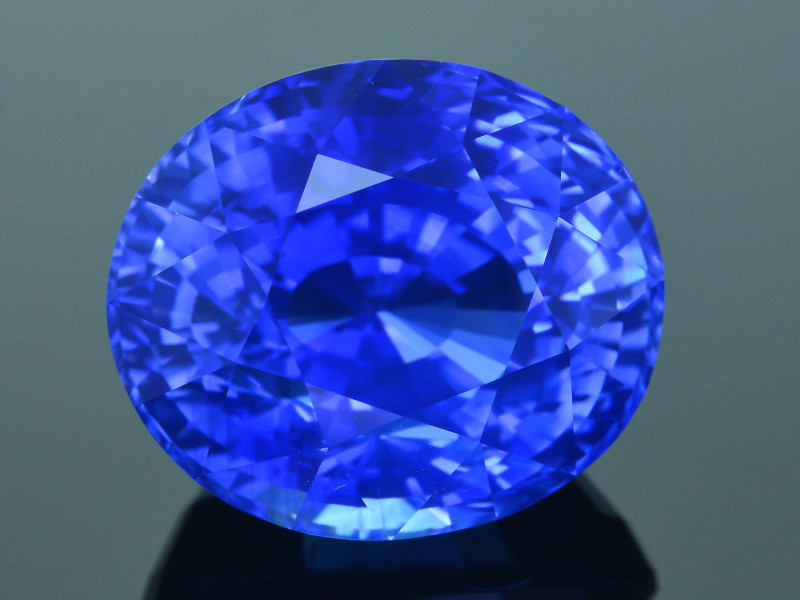
Sin duda, el azul es el color más popular del zafiro, vinculado a la piedra a lo largo de la historia. Este color proviene de impurezas de hierro y titanio, y una mayor cantidad de titanio produce tonos más oscuros.
Cualquier matiz secundario (como violeta o verde) solo puede representar el 15 por ciento o menos del color general para que la piedra se clasifique como zafiro azul.
Los zafiros azules tienen una gran demanda, lo que hace que sus precios sean más elevados que los de otros colores, a pesar de no ser tan raros.
Dicho esto, ciertos tonos son más raros y valiosos que otros.
Los principales tipos de zafiros azules son:
Cachemira : Ampliamente considerado como el mejor color de zafiro, azul aciano profundo con un aspecto aterciopelado debido a las inclusiones de seda, procedente del Himalaya pero extremadamente raro.
Azul aciano : tono azul puro (azul aciano), que se distingue del de Cachemira por provenir de otras fuentes.
Azul real : azul profundo y vivo con matices que van desde púrpura hasta violeta.
Azul hielo : azul pálido, similar al de un glaciar, a menudo con matices verdes.
Yogo : Zafiros de color azul aciano de alta calidad de Yogo Gulch en Montana, EE. UU.
Ceilán (Sri Lanka) : zafiros de color azul pálido a intenso con gran saturación, brillo y resplandor, procedentes de Sri Lanka.
Claro que esto no cubre todos los tonos. Verás muchos descriptores como azul bebé, índigo, azul marino, crepúsculo y más.
Todos los zafiros restantes que no son azules se denominan zafiros “de fantasía” o “de color fantasía”.
Zafiro rosa
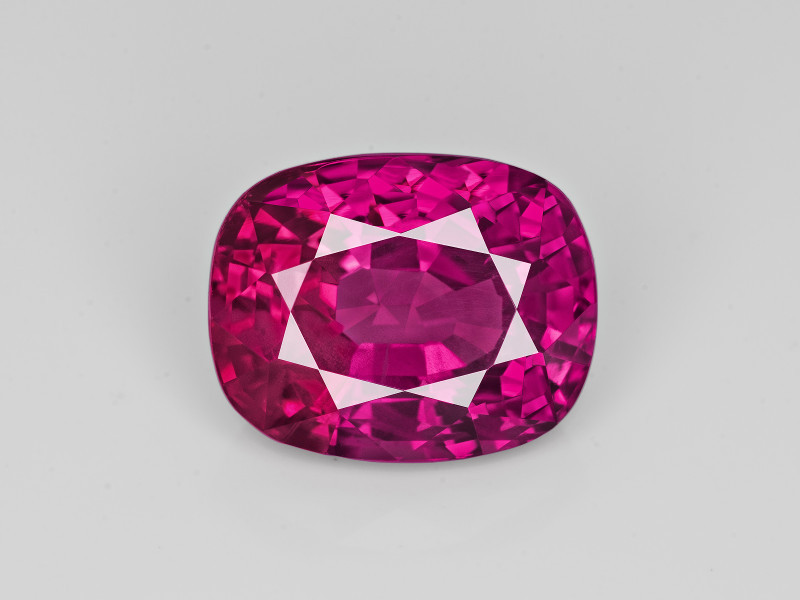
Los zafiros rosas presentan tonos rojizos claros debido a pequeñas cantidades de impurezas de cromo. Los matices comunes son el morado, el naranja o el amarillo. Los tonos más populares son el rosa pastel y el magenta.
Los gemólogos no se ponen de acuerdo sobre la diferencia exacta entre los rubíes y los zafiros rosas. Algunos clasifican el corindón rosa como rubí, mientras que otros solo clasifican las piedras de corindón predominantemente rojas como rubíes.
Dado que los rubíes son más raros, muchos vendedores pueden optar por etiquetar el corindón rosado como “rubí” para aumentar el precio, así que tenlo en cuenta mientras compras.
Zafiro púrpura
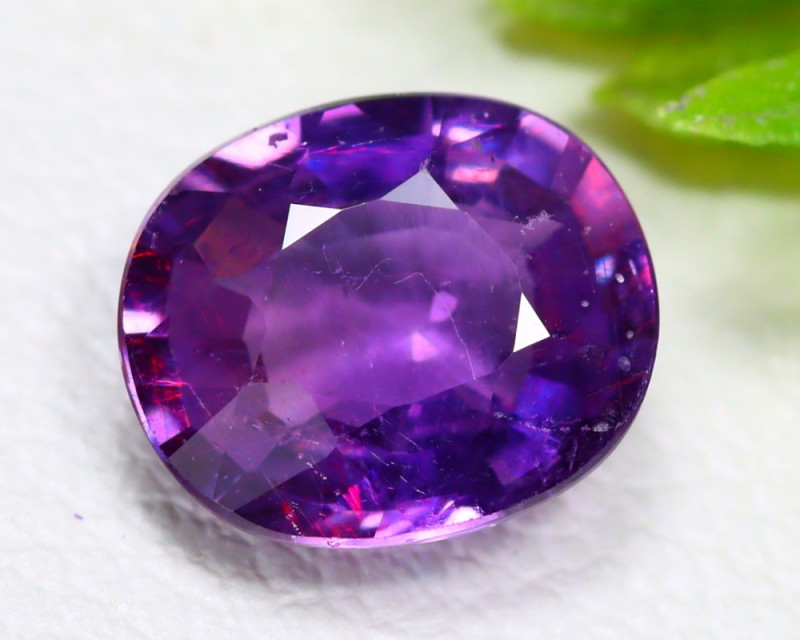
Los zafiros morados son bastante raros. Su tono púrpura puede provenir del vanadio o de una combinación de cromo, titanio y hierro ferroso. Los matices comunes son rojo, rosa, azul y gris.
En cuanto a valor, los zafiros púrpuras están por debajo de los azules pero por encima de los amarillos y los verdes.
Un ejemplo famoso (o infame) es el zafiro púrpura de Delhi, que en realidad es una amatista .
Zafiro amarillo

Disponibles en tonos que van desde claros hasta oscuros, los zafiros amarillos más valiosos son los de un vibrante amarillo canario. El tono amarillo proviene de impurezas de hierro férrico (Fe₃₃). Los matices comunes son verde, naranja, marrón y rosa.
Los zafiros amarillos en la astrología hindú se llaman Pukhraj y trabajan con Júpiter.
Zafiro naranja
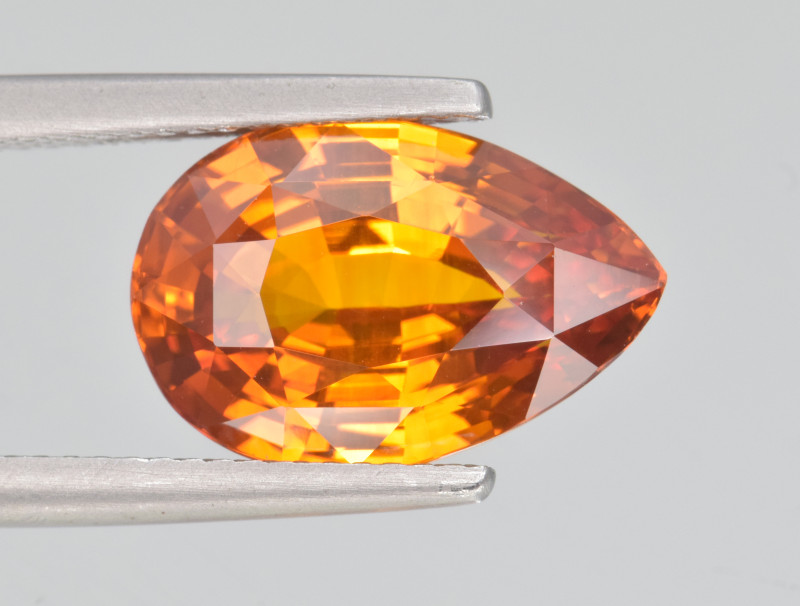
Los zafiros naranjas se aprecian mejor en tonos brillantes, rojo anaranjado o naranja puro. El color puede provenir de una combinación de impurezas de cromo y hierro o de la exposición a la radiación (natural o inducida en laboratorio). Los matices comunes son amarillo, rojo, marrón o rosa.
Algunos zafiros naranjas han sido tratados con difusión de berilio, que transforma los zafiros de color verde claro a amarillo en zafiros de color naranja vibrante.
Zafiro verde

Desde tonos pastel hasta verdes bosque intensos, los zafiros verdes son versátiles y abundantes. Su color proviene de una mezcla de impurezas de hierro férrico (Fe₃₄) y hierro ferroso (Fe₂₄). Los matices comunes son amarillo y gris.
Su abundancia y su bajo perfil hacen que los zafiros verdes sean más económicos, incluso como sustitutos de las esmeraldas .
Zafiro blanco

El zafiro blanco puede ser blanco o incoloro según su transparencia y claridad. Es la forma más pura de corindón, con escasas o nulas impurezas. Los naturales son bastante escasos, por lo que la mayoría de los que se comercializan son sintéticos o tratados.
Este zafiro es una alternativa común a los anillos de compromiso sin diamantes .
Zafiro negro
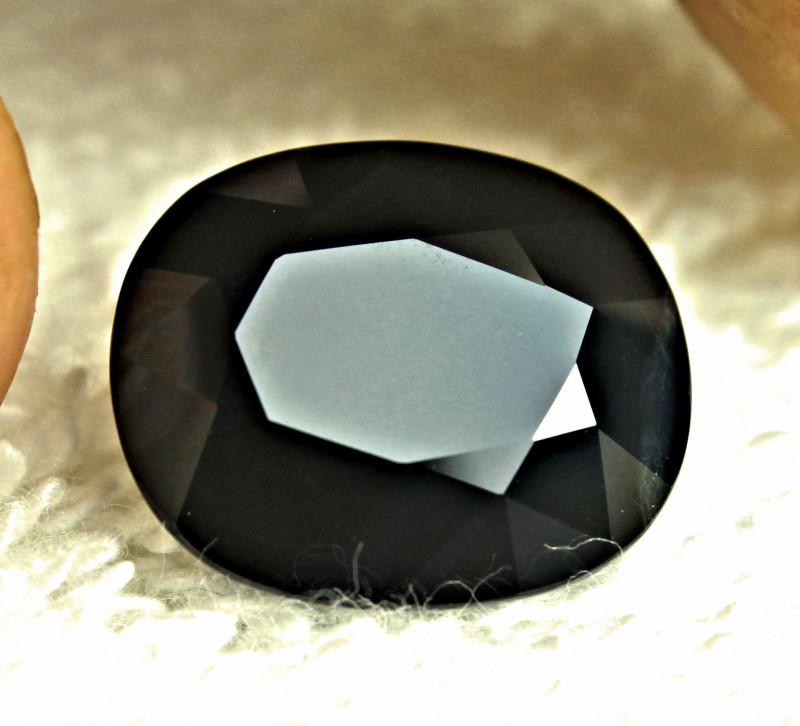
El zafiro negro es un tipo opaco menos buscado, coloreado por hierro y mucho titanio. Puede ser de color azul muy oscuro, verde, morado o gris. La mayoría de los joyeros consideran que los zafiros negros son de baja calidad, a menos que sean zafiros estrella negros.
Excepcionalmente, los zafiros estrella negros obtienen su "estrella" de inclusiones de hematita e ilmenita. En ocasiones, estos zafiros estrella presentan 12 radios con radios blancos y dorados.
Entre los zafiros, los negros son el único tipo fuertemente magnético.
Zafiro marrón
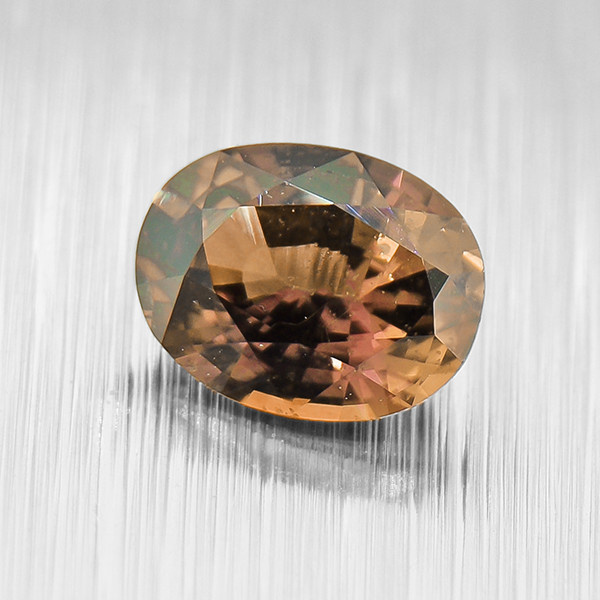
Los zafiros marrones se popularizaron recientemente con el auge de los diamantes color chocolate . Los zafiros marrones con calidad de gema son relativamente raros. Su color proviene del hierro y, a veces, del titanio.
Los ejemplares de color intenso y profundo suelen etiquetarse como "zafiros chocolate". Otro nombre comercial es "coñac", para zafiros de color marrón rojizo o naranja rojizo. Otros matices posibles son el amarillo, el rosa y el negro.
A continuación, repasaremos algunas variedades de zafiro raras y emocionantes.
Variedades de zafiro
Además de clasificarse por colores individuales, ciertos zafiros son conocidos por otras características, ya sean combinaciones de colores, fuentes notables o efectos ópticos.
Zafiros Padparadscha

Los zafiros Padparadscha se encuentran entre los más raros y valiosos. Provienen tradicionalmente de Sri Lanka y su nombre deriva del término sánscrito que significa "flor de loto".
Los requisitos exactos del color son objeto de debate, pero definitivamente es una combinación de rosa y naranja, a veces descrito como "atardecer", "albaricoque" o "melocotón".
Zafiros pavo real o sirena
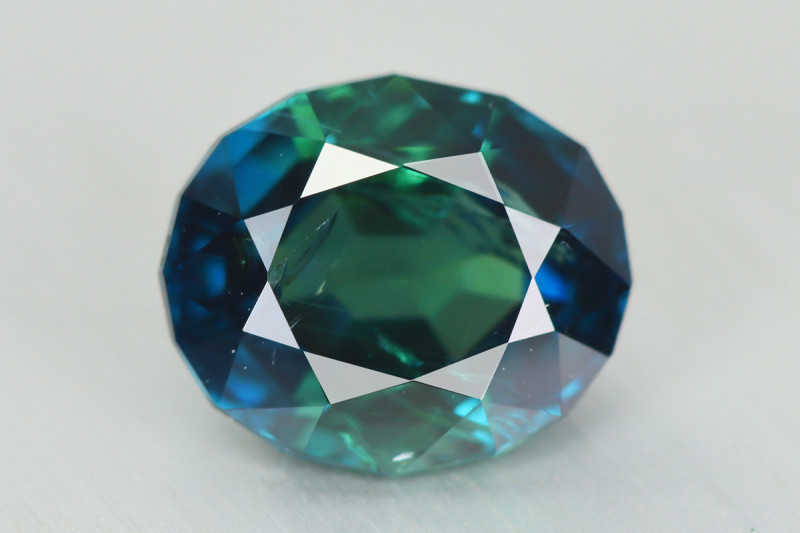
Los zafiros verde azulado presentan tonos azules y verdes predominantes, a veces con matices amarillos. Su popularidad ha aumentado recientemente.
La proporción azul-verde puede variar. Si la mezcla es 50/50, se obtiene un zafiro "pavo real" o "sirena" que puede parecerse a la turmalina Paraíba . La mayoría proviene de Montana, EE. UU.
Zafiros bicolores o particolores

En lugar de mezclar dos colores, algunos zafiros presentan dos colores distintos a la vez debido a la zonificación cromática. Estos se denominan zafiros bicolores, particolores o policromados.
Los zafiros bicolores son bastante raros. La mayoría son verdes y amarillos, mientras que los más raros (y valiosos) son azules y morados o tricolores. Una clara separación de colores en el centro de la piedra le confiere mayor valor.
Zafiros que cambian de color

Una variedad rara y buscada son los zafiros que cambian de color bajo diferentes iluminaciones (normalmente luz diurna e incandescente).
La mayoría son azules o púrpuras a la luz del día y violetas o púrpura rojizos bajo incandescencia. Los tipos más raros cambian:
De color verde a rojo o marrón rojizo
De rojo a marrón
Verde a verde amarillento
El factor de mayor valor aquí es la fuerza del cambio de color (es decir, débil, moderado o fuerte).
Zafiros estrella

Ciertas inclusiones (generalmente haces paralelos de diásporo o rutilo) pueden crear una reflexión de luz similar a la de una estrella, un fenómeno óptico llamado asterismo. El resultado es un zafiro estrella asterizado.
Los zafiros estrella vienen en la mayoría de los colores, aunque los naranjas, verdes y amarillos son bastante raros. La mayoría tiene una estrella de seis puntas, pero algunos zafiros estrella azul oscuro o negros, muy poco comunes, pueden tener una estrella de doce puntas.
Los zafiros estrella más deseados son transparentes y de color azul profundo con una estrella brillante, distintiva y más uniforme.
Zafiros Trapiche

Una variedad de aspecto similar a los zafiros estrella son los zafiros trapiche. Estos también presentan un patrón de seis rayos, similar a una estrella, debido a las inclusiones, pero la "estrella" no refleja la luz. Se asemeja más a los radios de una rueda.
Este efecto ocurre cuando inclusiones carbonáceas se asientan entre zonas de crecimiento durante condiciones de formación inusuales. Un ejemplo famoso son las esmeraldas trapiche brasileñas.
Entrando al lado espiritual de la piedra, ¿qué simbolizan los zafiros?

Significado e historia del zafiro
En general, los zafiros suelen simbolizar la sabiduría, el cielo y la lealtad, pero cada color tiene un simbolismo específico.
Los colores y significados del zafiro son:
Azul : Honestidad y compromiso
Rosa : Amor y perdón
Púrpura : sabiduría espiritual y confiabilidad
Amarillo : Éxito y conocimiento
Naranja : Creatividad y alegría
Verde : Serenidad y equilibrio
Blanco : Intuición y libertad
Negro : Fuerza y potencia
Marrón : Protección y resiliencia
¿Qué pasa con los significados culturales del zafiro?
Folclore y mitos del zafiro
Los zafiros, que existen desde hace miles de años, han generado numerosas leyendas.
En el islam, se describe que el séptimo cielo contiene zafiros. Las escrituras judías incluyen el zafiro entre las doce piedras del pectoral del Sumo Sacerdote y describen el trono de Dios en el cielo como hecho de zafiros.
El Nuevo Testamento cristiano incluye el zafiro como una de las doce piedras fundamentales de la Nueva Jerusalén. Los cristianos creían que los zafiros representaban la pureza, la piedad y las bendiciones celestiales. Una leyenda afirma que los Diez Mandamientos estaban grabados en zafiro.
Además, algunos cristianos llaman a los zafiros estelares “Piedras del destino”, creyendo que las tres barras transversales de su estrella de seis rayos representan las virtudes de la fe, la esperanza y el destino.
Los antiguos griegos honraban a Apolo, dios del sol, con zafiro. También creían que la piedra alcanzaba el reino espiritual, por lo que muchos la usaban para consultar al Oráculo de Delfos. Una leyenda griega del siglo XII afirma que Helena de Troya era tan codiciada por poseer un gran zafiro estrella.
Respecto a los orígenes del zafiro, una antigua leyenda persa afirmaba que la Tierra estaba situada sobre un enorme zafiro, y que su reflejo hacía que el cielo fuera azul.
En la antigüedad, la realeza creía que llevar zafiros los protegía de los celos y el veneno. De hecho, su uso como talismán protector estaba muy extendido.
 Imagen superior: Piedra de sello del rey Alarico II (484-587). Este sello se considera uno de los sellos reales germánicos más antiguos. La circunscripción reflejada dice: ALARICVS REX GOTHORVM = Alarico, rey de los godos. | Crédito de la imagen: James Steakley, licencia Creative Commons Atribución-CompartirIgual 3.0 Unported
Imagen superior: Piedra de sello del rey Alarico II (484-587). Este sello se considera uno de los sellos reales germánicos más antiguos. La circunscripción reflejada dice: ALARICVS REX GOTHORVM = Alarico, rey de los godos. | Crédito de la imagen: James Steakley, licencia Creative Commons Atribución-CompartirIgual 3.0 Unported
Historia antigua y medieval
El registro más antiguo de zafiros se encuentra en joyas del 600 al 275 a. C., usadas por los antiguos italianos llamados etruscos. Los zafiros provenían de Sri Lanka, la fuente más antigua e importante de zafiros.
Una mayor concienciación sobre el tema surgió alrededor del año 1200 d. C., después de que Marco Polo escribiera sobre los zafiros de Sri Lanka en su obra " El libro de las maravillas del mundo" . Los reyes medievales usaban zafiros como protección, una tendencia histórica constante entre los nobles.
Hacia el año 1100 d. C., el papa Inocencio III estableció que los obispos llevaran anillos de zafiro sin grabar. Los clérigos también usaban zafiros azules para simbolizar el cielo.
Casi al mismo tiempo, el científico musulmán Al-Biruni descubrió que los zafiros y los rubíes eran el mismo mineral mucho antes de los mineralogistas modernos.

Historia moderna
Un hilo conductor entre la antigüedad y la modernidad son los anillos de compromiso de zafiro. La práctica moderna de usar anillos de compromiso comenzó entre los siglos XV y XVI, cuando los ricos y la realeza la popularizaron.
El zafiro era una piedra popular, ya que las gemas preciosas sin diamantes se consideraban más valiosas. De hecho, los anillos de compromiso con zafiro azul eran la piedra central más común en Estados Unidos antes de que los diamantes se convirtieran en el estándar a principios del siglo XX.
Si bien la joyería de zafiro hoy en día se extiende más allá de las élites adineradas, la realeza ha mantenido viva su popularidad. Un ejemplo famoso es el anillo Marguerite, el anillo de compromiso de la princesa Diana, que luce un zafiro de Ceilán de 12 quilates.
Además de adornar a la realeza y a la gente común, ¿para qué sirve el zafiro hoy en día?

Propiedades curativas del zafiro
El zafiro ha seguido siendo una piedra curativa valiosa hasta los tiempos modernos.
Algunos apodos para el zafiro como cristal curativo incluyen:
Piedra del enfoque mental y el orden
Piedra del Destino
Piedra del Nuevo Amor
Piedra de la Prosperidad
Piedra del Compromiso
Continuando con las tradiciones pasadas, los zafiros siguen siendo piedras populares del chakra del tercer ojo, abriendo este centro energético para mejorar su intuición y conciencia espiritual.
Curación física
Los supuestos beneficios físicos de la piedra de zafiro incluyen el tratamiento o ayuda con problemas como:
Visión
migrañas
Insomnio
Fiebres
Función del sistema inmunológico
También se cree que los zafiros mejoran los sentidos.
Sanación emocional
Emocionalmente, se dice que los zafiros:
Proporcionar relajación
Disipar los pensamientos ansiosos
Aumentar la concentración
Promover la autodisciplina
Impulsar la creatividad
Fomentar la valentía
A continuación, veremos cómo los expertos determinan el valor del zafiro mediante la clasificación.
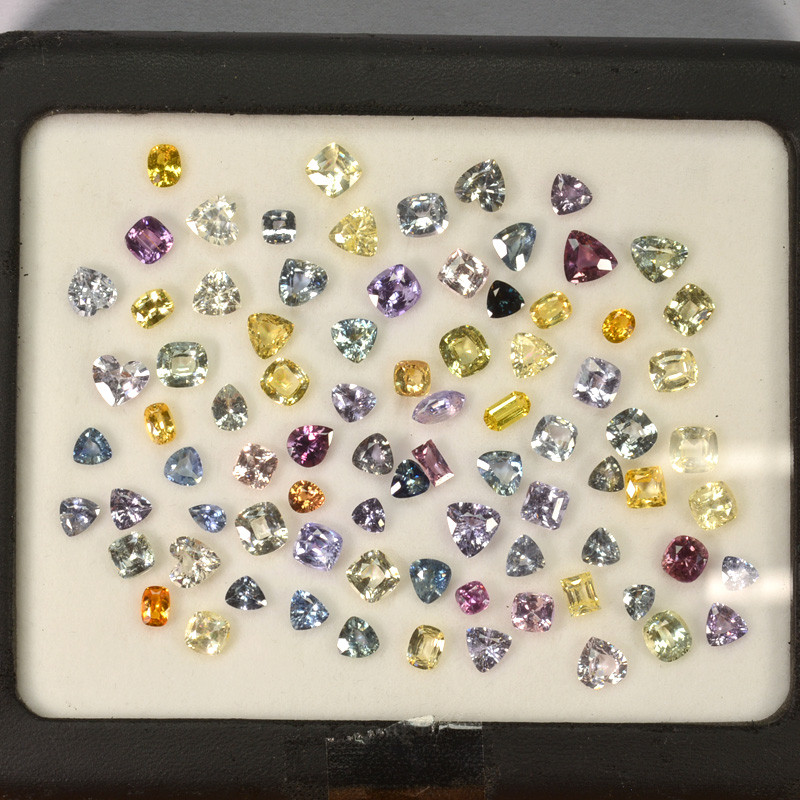
Propiedades de la piedra preciosa de zafiro
El valor del zafiro depende del color, el corte, la claridad, el peso en quilates, los tratamientos y el origen de la piedra (natural o sintético).
Color
El color es el factor clave para el valor del zafiro. Una saturación de intensa a intensa y un tono de medio a profundo son los más recomendables. Los colores demasiado claros, demasiado oscuros o grisáceos son menos valiosos.
En cuanto a la tonalidad, los colores más valiosos son el azul Cachemira, el Padparadscha y los rosas brillantes. Le siguen el verde azulado, el morado/violeta, el verde, el amarillo y el marrón. Los zafiros negros (sin estrella) son los menos valiosos.
Los zafiros raros que cambian de color y que son bicolores o tricolores también son valiosos.
Cortar
Los lapidarios (talladores de gemas) deben considerar la zonificación de color, el pleocroísmo, el brillo y los efectos ópticos al tallar zafiros. Los mejores cortes muestran bien las características inherentes del zafiro, con una simetría adecuada y sin zonas oscuras.
Las tallas facetadas redondas, cojín y ovaladas estándar son las más populares. Las tallas más valiosas, en orden descendente, son la esmeralda, la marquesa y la pera.
Los zafiros estrella deben tallarse como cabujones . Los zafiros de menor calidad también pueden convertirse en cabujones. Otros cortes de zafiro incluyen tallas y cuentas.
Claridad
Los zafiros son gemas de color Tipo II , lo que significa que se esperan pequeñas inclusiones visibles. Generalmente, los zafiros tienen mayor claridad que los rubíes. Algunos joyeros clasifican la claridad del zafiro según la claridad del diamante : IF, VVS, etc.
Los más valiosos tienen una claridad VVS (sin inclusiones visibles con un aumento de 10x), pero son increíblemente raros. La claridad de menor valor va de SI a I (ligeramente incluidas a ligeramente incluidas). La mayoría de los zafiros se encuentran en un rango intermedio, de VS a SI (muy ligeras a ligeramente incluidas).
Las inclusiones comunes de zafiro incluyen:
Seda (hilos largos, finos y delgados, a menudo de rutilo)
Bandas de color hexagonales o líneas de crecimiento
Huellas dactilares (áreas huecas, con forma de red y nubladas, llenas de gas o líquido, que crean patrones similares a huellas dactilares alrededor de otros cristales incluidos)
Cristales de circón , a menudo con fracturas oscuras en forma de “halo”
Varios cristales (por ejemplo, granate , hematita, corindón, espinela)
En general, las inclusiones más visibles resultan en valores más bajos. Sin embargo, las inclusiones que causan asterismo o el aspecto aterciopelado de los zafiros de Cachemira son la excepción.
 En la imagen superior: Logan Sapphire | Crédito de la imagen: Chip Clark, personal del Smithsonian; Dominio público
En la imagen superior: Logan Sapphire | Crédito de la imagen: Chip Clark, personal del Smithsonian; Dominio público
Peso y tamaño en quilates
El peso en quilates del zafiro depende del color y la procedencia. Los zafiros azules vienen en muchos tamaños, pero su calidad tiende a disminuir a medida que son más grandes. Las piedras grandes y de alta calidad son las más valiosas.
El precio por quilate de la mayoría de los zafiros aumenta con tamaños mayores, generalmente de 2, 3 y 4 quilates. Las opciones de más de 5 quilates tienen precios por quilate significativamente más altos.
Algunos zafiros grandes que establecen récords incluyen:
Gigante azul de Oriente : 486,52 quilates, azul aciano; el zafiro azul facetado más grande del mundo; descubierto en Sri Lanka en 1907
Lone Star : 9.719,5 quilates, azul profundo; el zafiro estrella más grande del mundo; descubierto en Carolina del Norte, EE. UU., en 1989
Estrella de Adán : 1.404,49 quilates, azul claro; el segundo zafiro estrella más grande; descubierto en Sri Lanka en 2016
Estrella Negra de Queensland : 733 quilates, negra; el tercer zafiro estrella más grande; descubierto en Australia en 1938
Belleza Azul de Asia : 392,52 quilates, azul aciano; el zafiro azul más caro del mundo (vendido por 17.305.996 dólares en 2014); descubierto en Sri Lanka en 1926p>
Zafiro Logan : 422,98 quilates, azul violeta; Descubierto en Sri Lanka
Zafiro Reina María de Rumanía : 478,68 quilates, azul aciano; anteriormente el zafiro más grande jamás vendido en 2003
Estrella de la India : 563,35 quilates, azul grisáceo; el cuarto zafiro estrella más grande; estrellas de 6 puntas en la parte superior e inferior; descubierto en Sri Lanka a principios del siglo XVIII.
Zafiro Stuart : 104 quilates, azul; parte de las joyas de la Corona británica; probablemente procedente de Asia
El zafiro invaluable : 451.500 quilates, blanco y azul; el zafiro tallado más grande del mundo
Tratos
Aproximadamente el 95 por ciento de los zafiros se calientan para mejorar el color y la claridad, una práctica que se remonta a milenios.
Aunque los zafiros sin tratar de alta calidad pueden ser hasta un 50 por ciento más caros que los tratados de calidad similar, los tratamientos térmicos no suelen afectar significativamente el valor.
Ocasionalmente, se utilizan tratamientos de difusión para realzar la "estrella" de los zafiros estrella o cambiar su color. Los tratamientos de irradiación, menos frecuentes, pueden convertir los zafiros incoloros en azul claro, naranja o amarillo. Se puede realizar una curación de fracturas con fundente para mejorar la claridad.
Recomendamos evitar los zafiros tratados con recubrimientos de película fina, tratamientos de aceite o empastes.
Sintéticos
El corindón fue la primera piedra preciosa sintética (cultivada en laboratorio) creada para uso comercial, comenzando con los primeros rubíes sintéticos de Marc A. Gaudin en 1834.
Los primeros zafiros sintéticos aparecieron en 1873, creados mediante el método de flujo, seguido por el desarrollo del método de fusión por llama en 1902.
Los zafiros se pueden sintetizar mediante procesos de solución (creciendo a partir de un cristal semilla) o procesos de fusión como el proceso Czochralski o el método de fusión de llama Verneuil.
Además de parecer más perfectos que el material natural, los zafiros sintéticos también suelen contener estrías curvas o burbujas de aire en su interior.
La síntesis de zafiros estrella comenzó a finales de la década de 1940 con las "Linde Stars" de Union Carbide. Estas se creaban calentando zafiros sintéticos con titanio para crear inclusiones artificiales de rutilo . La mayoría de los zafiros estrella Linde tenían una "L" en la base (aunque no todos), lo que facilitaba su identificación. Sin embargo, su producción se detuvo en la década de 1970.
Afortunadamente, aún existen indicadores para identificar otros zafiros estrella sintéticos. El primer indicador es el color, que suele ser más intenso y uniforme que el de los zafiros estrella naturales. Muchos zafiros estrella sintéticos también presentan una estrella más impecable y uniforme que los zafiros naturales.
En términos de valor, los zafiros cultivados en laboratorio son significativamente menos costosos que sus contrapartes naturales, hasta $10,000 menos por quilate.
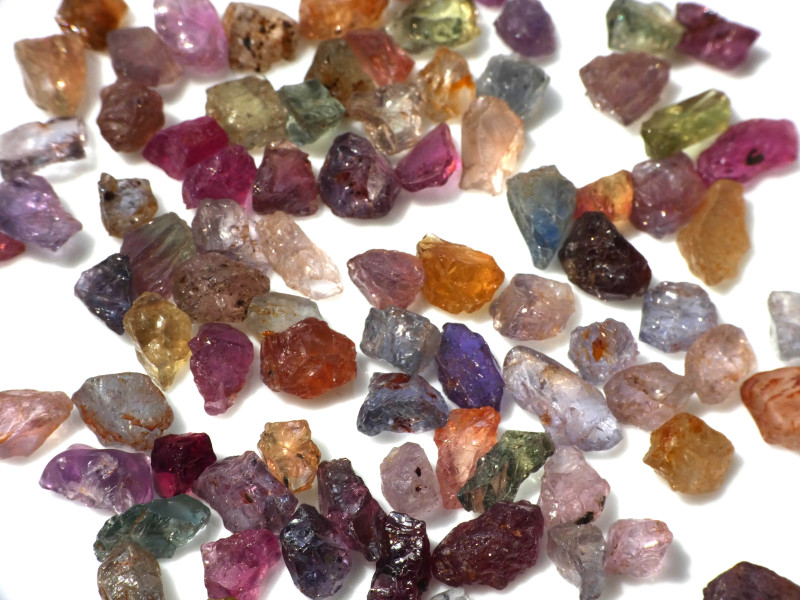
Formación y fuentes de zafiro
Las piedras de corindón se forman dentro de rocas metamórficas o ígneas.
En las rocas ígneas, la piedra cristaliza al enfriarse el magma. La roca ígnea debe ser rica en aluminio y libre de sílice.
En las rocas metamórficas, los cristales a menudo se forman cuando los antiguos fondos marinos sufren metamorfismo a partir de aguas calientes ricas en aluminio.
A menudo, fuerzas externas como la erosión rompen la roca que rodea el zafiro. La piedra es entonces transportada por el agua a depósitos aluviales como los lechos de los ríos.
Ubicaciones mineras
La mejor fuente de zafiro puede depender del color que se busque, incluso del tono específico de azul. La fuente más importante, históricamente y en la actualidad, es Sri Lanka.
Además de Sri Lanka, las principales fuentes de gemas de zafiro son:
Australia
Cachemira, India
Kenia
Laos
Madagascar
Montana, Estados Unidos
Myanmar (Birmania)
Tanzania
Tailandia
Vietnam
A menudo verá el origen de un zafiro como descriptor de un nombre comercial, como "birmano", "cachemir" o "africano". Los zafiros de alta calidad de ciertas regiones pueden tener características comunes, pero esto no representa a todos los zafiros de esa región. Además, los nombres comerciales locales no siempre son precisos. Una certificación de gemas de buena reputación es mejor para garantizar la autenticidad.
Dejando a un lado las fuentes, ¿es caro el zafiro? A veces, pero los precios varían.

Precio y valor de la piedra preciosa de zafiro
El precio de las piedras preciosas de zafiro comienza en $5 por quilate y llega a superar los $40,000 por quilate. A continuación, se detallan diferentes rangos de precio por quilate del zafiro, en orden descendente. Estos precios abarcan todos los rangos de peso en quilates.
Precios del zafiro azul
Precios del zafiro facetado de Cachemira ordenados por calidad:
Superior : $9,000-$50,000 por quilate
Muy bueno : $7,000-$42,000 por quilate
Bueno : $2,400-$22,500 por quilate
Precios del zafiro azul facetado no cachemir:
Superior : $1,400-$10,500 por quilate
Muy bueno : $480-$8,100 por quilate
Bueno : $250-$6,300 por quilate
Precio justo : $210-$4,800 por quilate
Los cabujones de zafiro azul se venden por entre 20 y 300 dólares el quilate.
Precios del zafiro rosa y padparadscha
Los siguientes en valor son los zafiros Padparadscha facetados:
Superior : $1,000-$25,000 por quilate
Muy bueno : $950-$22,000 por quilate
Bueno : $900-$20,000 por quilate
Sobre los precios de los zafiros rosas facetados:
Muy bueno : $160-$8,400 por quilate
Bueno : $140-$7,800 por quilate
Precio justo : $50-$1,050 por quilate
Precios de otros zafiros de colores de fantasía
Precios de otros zafiros facetados de colores fantasía:
Zafiros morados : $280-$1,840 por quilate
Zafiros amarillos : $50-$1,625 por quilate
Zafiros blancos : $50-$800 por quilate
Zafiros verdes : $20-$240 por quilate
Zafiros negros : $4-$290 por quilate
Precios fenomenales de la variedad de zafiros
Los zafiros facetados que cambian de color tienen un precio que va desde los 120 dólares hasta los 5.000 dólares el quilate.
Precios del zafiro estrella:
Color de fantasía : $100 a $500 por quilate
Azul : de 20 a 1.200 dólares por quilate
Negro : $13 a $30 por quilate
Antes de terminar, te enseñaremos cómo cuidar tus zafiros.
Cuidado y mantenimiento del zafiro
Dada su durabilidad, la mayoría de los zafiros son adecuados para el uso diario y requieren un cuidado mínimo de la piedra preciosa .
En cuanto a la pérdida de color, casi todos los zafiros se decoloran ligeramente con la exposición prolongada al sol. Los zafiros amarillos, y en ocasiones los Padparadscha, son más susceptibles a la decoloración por exposición solar. Curiosamente, muchos joyeros dejan los zafiros amarillos para intensificar su color, lo cual funciona. La estabilidad del color del zafiro amarillo depende del agente colorante.
Las fracturas, las inclusiones abundantes, el relleno de fracturas y los tratamientos con aceite debilitan los zafiros. Manténgalos alejados de productos químicos agresivos o sistemas de limpieza mecánicos.
La mayoría de los zafiros se pueden limpiar con sistemas mecánicos como limpiadores ultrasónicos o de vapor. Sin embargo, el método de limpieza más seguro es con un cepillo de dientes suave, agua tibia y jabón suave.
Los zafiros son duros, por lo que pueden rayar la mayoría de las gemas. Es mejor guardarlos separados de otras gemas.

¿Qué zafiro te cautiva?
A estas alturas, ya comprendes por qué los zafiros han mantenido su prestigio durante siglos. Con leyendas, beneficios y una infinidad de colores, ¿a quién no le encantan?
¿Listo para encontrar tu favorito? ¡Compra zafiros hoy mismo!
Buscar en el Gemstone Encyclopedia
Subastas relacionadas
Artículos relacionados
Cada persona tiene una piedra preciosa que corresponde a su signo zodiacal. Estas también se conocen como tu Piedra Estelar. Aprende más sobre estas piedras y descubre cuál es tu Piedra Estelar.
10th May 2018
Originalmente, las piedras de nacimiento o gemas se asociaban con un signo zodiacal o el mes de nacimiento de una persona. Descubra cuál es su piedra y vea las que tenemos a la venta.
8th Feb 2021
Hay docenas de gemas de cuarzo y calcedonia con diversos colores y patrones. ¡Aprenda todo sobre las propiedades del cuarzo y cada tipo de cuarzo, desde la amatista y el ágata hasta el cuarzo plasma y el cuarzo fantasma!
15th Oct 2020
últimos artículos
Las tallas de marfil de palma, también llamadas marfil vegetal, son una alternativa natural al marfil de elefante, extraído éticamente de la nuez de palma de la palmera sudamericana Phytelephas. ¡Aprenda todo sobre el marfil de palma en esta guía!
15th Jan 2026
Las piedras de flores de crisantemo son maravillas naturales que presentan un patrón floral de calcita blanca, celestita o andalucita sobre piedra caliza negra o lutita.
13th Jan 2026
La piedra solar reticulada arcoíris es una variedad de feldespato con tres magníficos efectos ópticos causados por la presencia de diversas inclusiones. Su vibrante colorido y su patrón reticular la convierten en una rara joya de colección.
12th Jan 2026
Categorías de artículos
How To's is where you will find helpful articles from gem Rock Auctions on how to cut gemstones, select gemstones and buy gemstones.
9 Artículos








